Hands hammering, ears hearing the sound of bronze…
When you come to Hue and ask where to buy bronze products, you will definitely receive the answer to Duc ward - a locality with a tradition of about 400 years in bronze casting. But few people know that this was also a place where "armour" was practiced, and there was a glorious time for bronze hammering. And now, fewer and fewer people know about this profession because bronze items from the hammering profession are gradually fading into the past.
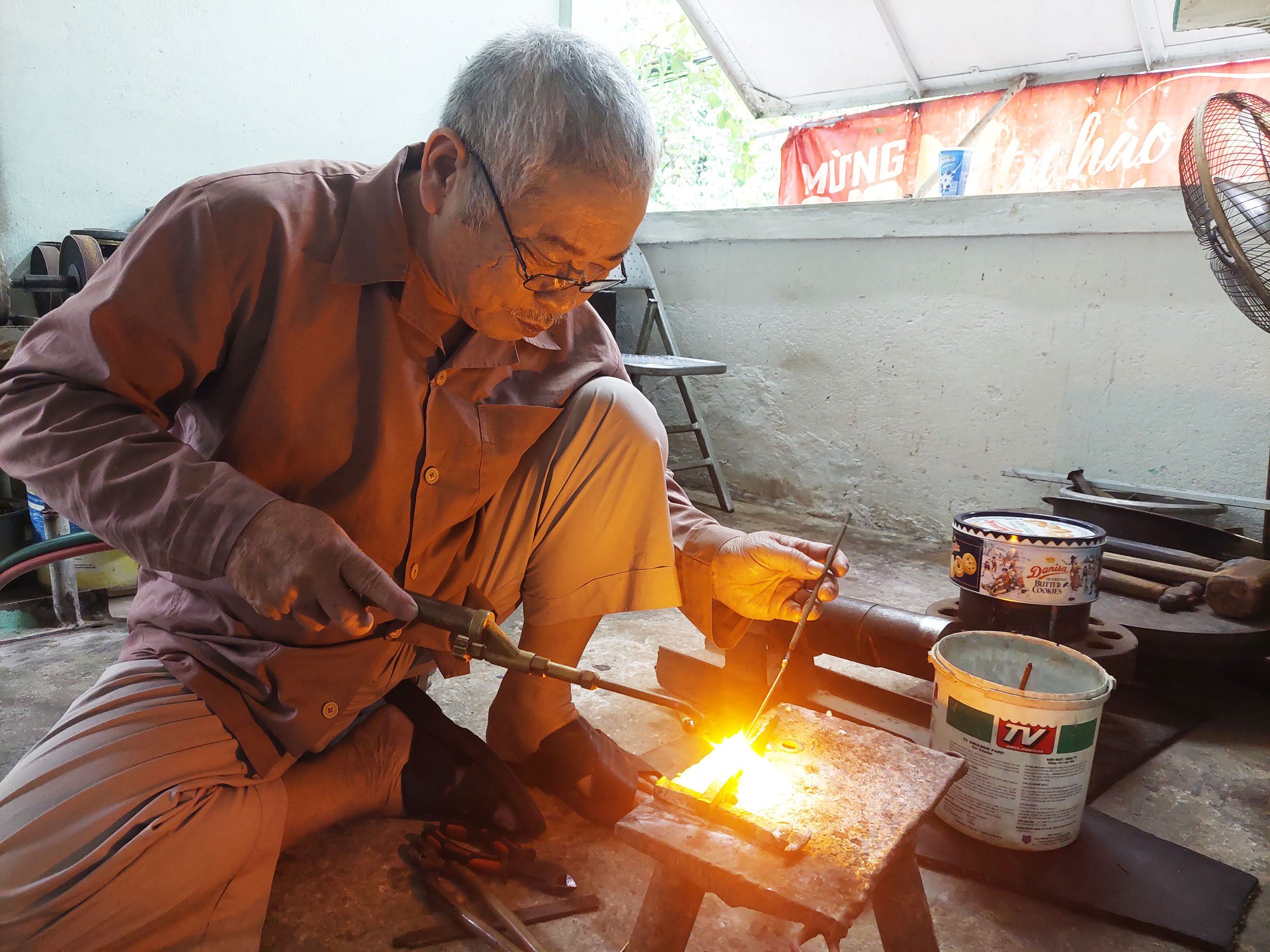
Mr. Nguyen Thanh Cong has been famous for his bronze hammering profession for decades.
With great difficulty, we found Mr. Nguyen Thanh Cong's house located on a small hill, deep in an alley on Bui Thi Xuan Street (in Duc Ward, Hue City). He is the last artisan in Duc Ward who still practices the profession of bronze hammering, specializing in making magical instruments.
In the spacious kitchen, which is also the workshop, Mr. Cong is diligently hammering copper plates into funeral wreaths to deliver to a pagoda in Hue. He talks through the sound of hammering: "Hue people are no strangers to this funeral wreath. Together with the bell, it has become an indispensable ritual object for Buddhist monks. It is also an important object in worship and performing folk religious rituals." Although bronze casting techniques are increasingly advanced, many people still come to Mr. Cong to make funeral wreaths and bells, not only because he is the last person to follow the profession, but also because of the bronze hammering brand he has built over the past decades.
To hammer a bronze drum, the hammerer, in addition to having flexible and skillful hands, also needs a good ear for sound. So good that he doesn't wait until he has a finished bronze drum and then tap it to listen, but it is the whole process of feeling the sound even while hammering the bronze piece. When Mr. Cong used a bamboo stick to tap on the finished bronze drum, from the round bronze piece shaped like a lid, I heard a clear, crisp, and resonant sound.
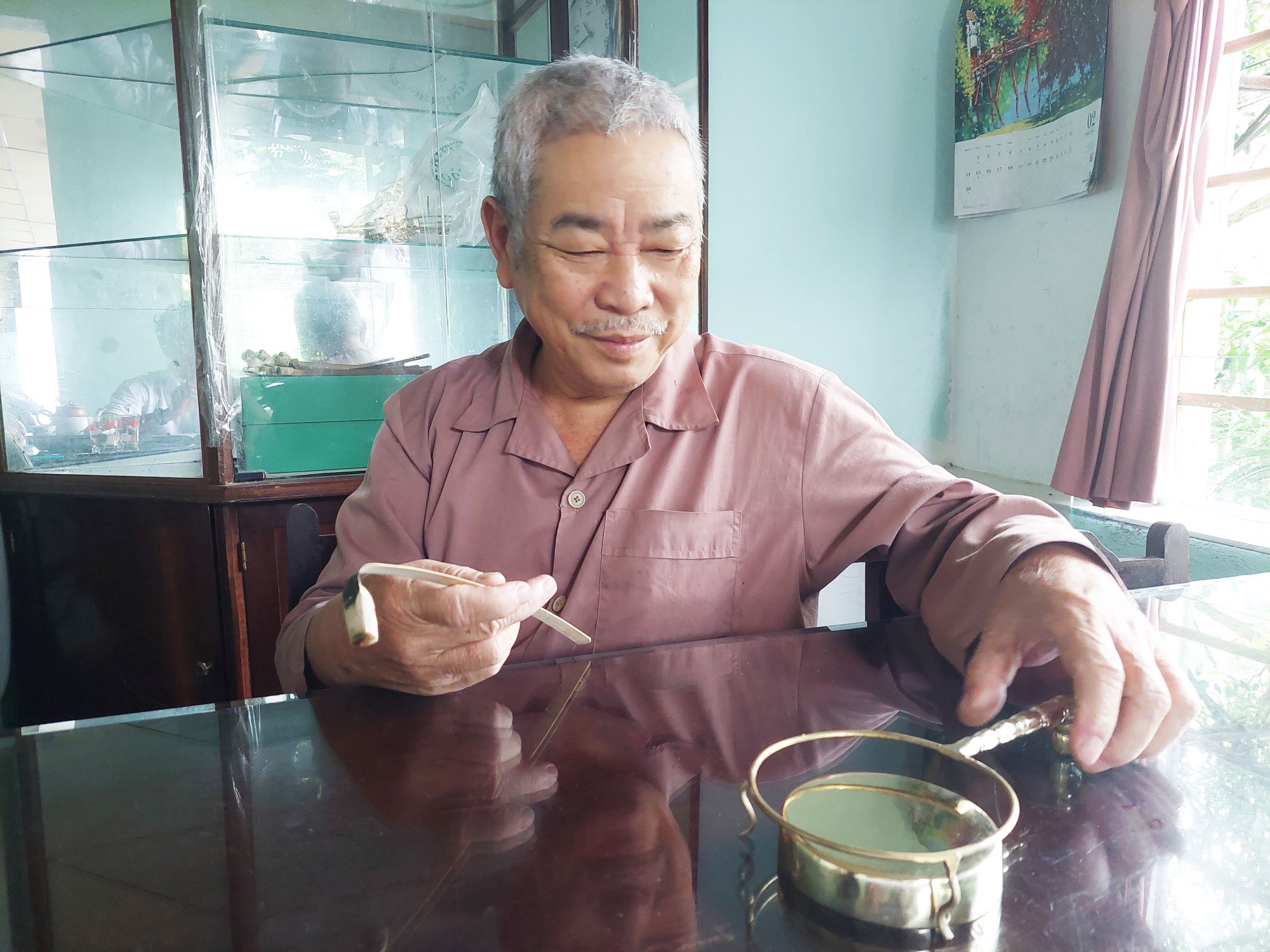
The bronze bell has just been finished by Mr. Nguyen Thanh Cong.
"To get this sound, the forger must have a steel anvil and many standard hammers. And most importantly, it is necessary to "bend" to produce this sound by evenly accompaniment each hammer blow. The hammer must hit the copper surface in the right place, on the right surface. While hammering, listen to the sound, and when it reaches a certain level, stop hammering. Because if the outer surface of the bronze is only a little uneven, it will not produce a meditative sound. The most difficult thing is to make the middle surface of the bronze thick while the surrounding area is thin, so that when the bronze surface is struck, it will vibrate, creating the desired sound...", Mr. Cong said.
The Last Successor
It is no coincidence that the house of artisan Nguyen Thanh Cong has become a familiar address for many people who buy religious instruments. To convince customers, especially monks and elderly people who practice folk beliefs, each of the instruments he creates must be beautiful in form and sound, especially with a meditative sound that only appears in sacred places. Although he is not a monk, thanks to his gifted ears and a calm spirit, after decades of working in the bronze hammering profession, the instruments he creates are loved by many people.
"To make a tang, you have to choose beautiful copper. First, you have to make a round copper, then roughly pound it, and fix it over and over again by using a hammer to "melt" the copper evenly. Next, the craftsman tempers the rim until it is "ripe" and then tempers it again. After that, the copper piece is heated over a fire and tempered until the copper is hard again. Continue to smooth and polish all sides to make the sound of the tang really beautiful. I do it by hand, so the appearance may be different, but the sound is "ten out of ten", Mr. Cong humorously said. The most important part is the finished tang face, then the supporting handle. For aesthetics, Mr. Cong stylized the copper into a small bamboo tree for each handle. To make the tang really loud, he also crafted a mallet from a bamboo stick with special secrets.
Another magical instrument is the bell (shaped like an upside-down bell with a handle attached to the top) which Mr. Cong also crafted from bronze with many more complicated steps than the process of making a bell because it also has a "carved" swastika on it. "The bell requires the bronze to be exactly 2 mm thick to make a standard sound. If it is thinner, the bell will sound like the sound of a candy bell in the old days," he said. In addition to making bells and bells, he also regularly repairs gongs, cymbals, and command bells that are "mute" or have a different sound. His hands have revived countless bronze musical instruments that are decades old in many places across the country.
Mr. Cong said that bronze casting can be called his family's traditional profession. In the past, his grandfather came from Dai Bai casting village ( Bac Ninh ) and when he came to Hue, he quickly became famous for his bronze casting profession. By his father's generation, the name Thai "go" was also famous in Da Nang City. After that, his parents moved to Duc ward to settle down. Mr. Cong grew up in the famous "cradle" of bronze casting in Hue, so he inherited the skills that not everyone has. "Like my father and grandfather, I am also good at casting objects, such as vases, bronze lamps on the family altar, bronze trays, bronze pots, fruit boxes... But then modern life pushed the profession into a situation where if we want to survive, we have to choose the path of casting magical objects," Mr. Cong confided.
When asked if anyone was learning this profession, he said he had a son but he was now following another profession. "Who is learning anymore to pass it on? I am old and weak, when I die, the profession will follow me...", Mr. Cong sighed. (to be continued)
Source link



![[Photo] General Secretary To Lam visits exhibition of achievements in private economic development](https://vphoto.vietnam.vn/thumb/1200x675/vietnam/resource/IMAGE/2025/5/18/1809dc545f214a86911fe2d2d0fde2e8)

![[Photo] National conference to disseminate and implement Resolution No. 66-NQ/TW and Resolution No. 68-NQ/TW of the Politburo](https://vphoto.vietnam.vn/thumb/1200x675/vietnam/resource/IMAGE/2025/5/18/adf666b9303a4213998b395b05234b6a)
![[Photo] More than 17,000 candidates participate in the 2025 SPT Competency Assessment Test of Hanoi National University of Education](https://vphoto.vietnam.vn/thumb/1200x675/vietnam/resource/IMAGE/2025/5/17/e538d9a1636c407cbb211b314e6303fd)

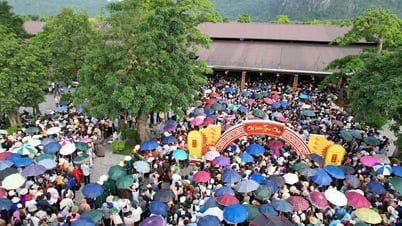







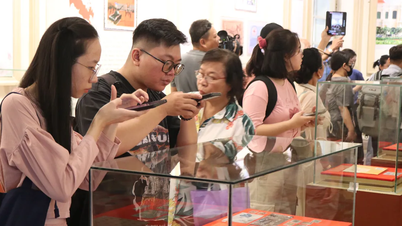










![[Photo] Prime Minister Pham Minh Chinh chairs meeting on science and technology development](https://vphoto.vietnam.vn/thumb/1200x675/vietnam/resource/IMAGE/2025/5/17/ae80dd74c384439789b12013c738a045)














































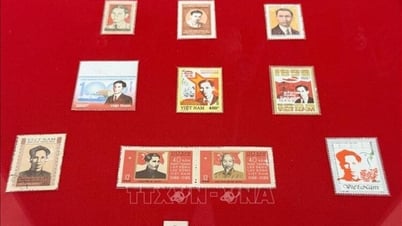














Comment (0)